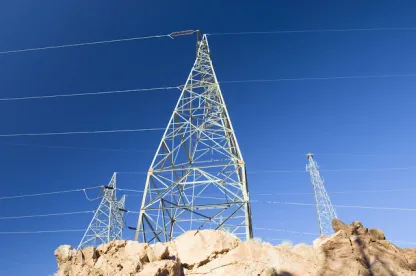As the partisan debate about the Environmental Protection Agency’s (EPA’s) Clean Power Plan continues, Chairman of the House Committee on Natural Resources Rob Bishop (R-Utah) recently suggested that the agency’s forthcoming carbon emission rules could significantly harm the West Indian Manatee, a mammal that has been listed as endangered under the Endangered Species Act since 1967.
Manatees, known colloquially as sea cows, are herbivorous aquatic mammals that inhabit shallow coastal areas and rivers of the Gulf of Mexico, Caribbean Sea, and Amazon Basin. Of the three species of manatee, the West Indian variant is perhaps most widely known domestically because it primarily makes its home in the coastal waters of the southern Atlantic Ocean from North Carolina to Florida. Unable to tolerate prolonged exposure to water temperatures below 68 °F (20 °C), the animals make a winter migration to Florida, where according to Fish & Wildlife Service (FWS) estimates nearly two-thirds of the population congregates near the warm-water outflows of power plants rather than continue south.
As we have discussed in previous posts, EPA’s plan to adopt rules regulating greenhouse gas emissions from existing coal-fired power plants this summer has garnered criticism from various quarters. Florida and North Carolina regulators recently claimed that rules for existing facilities would lead to economically devastating coal plant closures. Bishop added concerns about manatee conservation to the mix, pointing out that such closures would decrease the amount of warm water released by industry into Florida’s waterbodies, thus posing a threat to the migrating mammals.
Bishop raised the issue with FWS director Dan Ashe during a budget hearing on March 19, 2015. He showed the Subcommittee on Federal Lands and Subcommittee on Water, Power and Oceans a photograph of wintering manatees in Tampa Electric’s Big Bend discharge canal—a state and federally designated manatee sanctuary—to illustrate that “if EPA regulations cause this primary warm-water site to close down or substantially alter its operations, then it would adversely affect the manatee.” After acknowledging that EPA and FWS have not consulted on the proposed rules, Ashe agreed that such consultation was warranted “because there is a very direct and obvious impact and relationship between that water discharge and those manatees.” FWS subsequently clarified that Ashe was referring to consultation about a power plant’s impact on the mammals, rather than consultation on EPA’s carbon emissions rules writ large.
The Clean Power Plan gives states flexibility and does not preclude them from undertaking wildlife habitat mitigation efforts. Environmentalists have noted that manatee conservation and the Clean Power Plan can therefore be pursued in concert, and that mitigation measures might involve replacing warm-water regions frequented by manatees—something that the Center for Biological Diversity points out has been contemplated for years—or encouraging the animals to continue their migration further south




 />i
/>i
